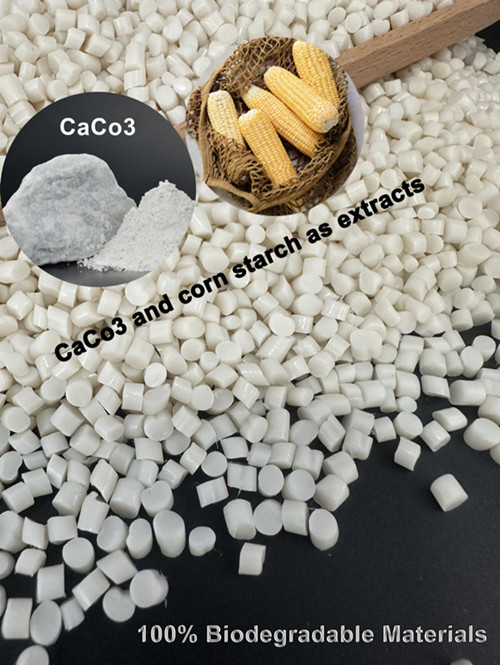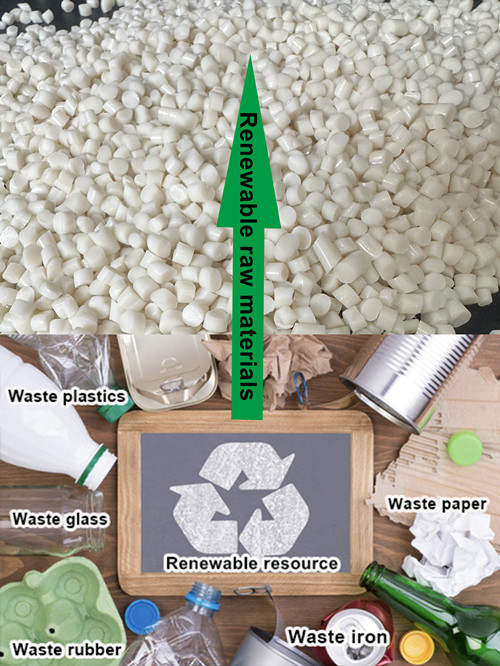The main difference between biodegradable materials and recycled materials lies in their sources and degradation properties.

Degradable raw materials usually refer to materials that can be decomposed by microorganisms (such as bacteria, molds, algae, etc.) in the natural environment under certain conditions. After being discarded, these materials can be biodegraded into carbon dioxide and water in the natural environment, ultimately becoming a part of the carbon cycle in nature. The ideal biodegradable material should have good performance and be completely decomposed by environmental microorganisms after disposal, without causing long-term pollution to the environment.
The types of biodegradable materials include photodegradable materials and biodegradable materials, and their degradation process is influenced by various factors such as temperature, molecular weight, and material structure.
The characteristics of biodegradable materials are environmental friendliness, degradability, ease of treatment, and reusability. They use biodegradable raw materials in production, which have certain degradation characteristics after processing, and will not produce harmful waste to the environment.

Recycled materials refer to reusable raw materials obtained during the process of decomposition, crushing, processing, and other regeneration processes using waste materials, waste products, and waste components. Recycled materials usually refer to renewable resources such as recyclable minerals, intermediate products, and finished products, such as waste plastics, waste rubber, waste glass, waste paper, etc. The recognition of recycled materials is global, as they can replace some new raw materials, thereby reducing the impact on natural resources and the environment.
The characteristics of recycled materials are good plasticity, strong heat resistance, low cost, and stable quality. Recycled materials can achieve the purpose of recycling by recycling waste materials and processing them through technological means. In production, recycled materials can replace a portion of new raw materials, thereby achieving material recycling.
The process of regeneration does not involve the biodegradation of materials, but rather the separation and purification of waste through physical or chemical methods before processing into new products. The source of recycled raw materials can be fossil based materials (such as plastics, metals, etc.) or biobased materials, such as materials from renewable resources such as corn and cassava.
Although both recycled and biodegradable materials have environmentally friendly properties, there are significant differences between the two. Recycled materials refer to materials obtained through the recycling and processing of waste materials, products, and components, which are equivalent to materials that are recycled and reused. Degradable materials refer to biodegradable materials made from biodegradable raw materials, which can be decomposed into small molecules or ions in the natural environment, and further converted into useful biomass and harmless substances.
Recycled materials have a wide range of applications in many fields, such as plastic products, glass products, building materials, electronic components, paper, etc., due to their stable quality, good plasticity, and low cost. Degradable materials are mainly used in fields such as medicine, food, and packaging. For example, biodegradable packaging bags, biodegradable plastic tableware, biodegradable pharmaceutical packaging, etc.
Although recycled materials and biodegradable materials are both environmentally friendly materials, they have significant differences in concept, characteristics, and application areas. In daily production and life, we should choose suitable materials according to the actual situation, jointly protect the environment, and build a beautiful home.
